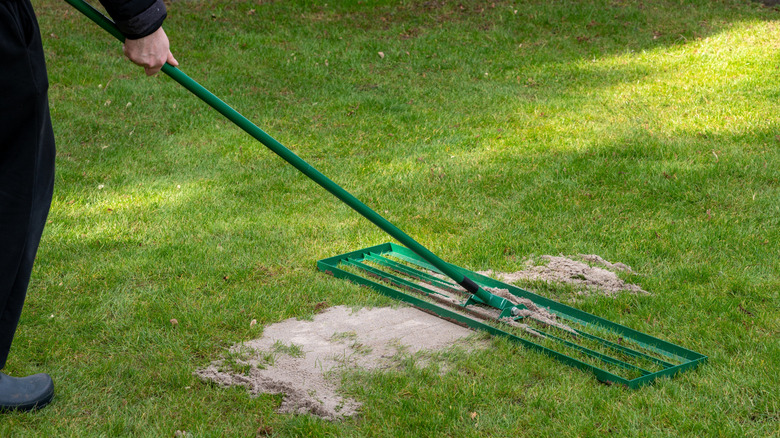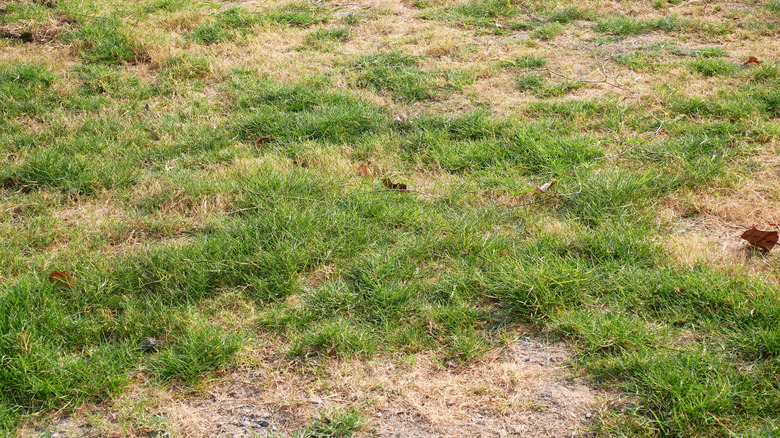What Is A Lawn Leveling Rake? Here's Why It's A Must-Have Tool For Your Yard
Most lawns don't stay perfectly flat for long. Over time, soil settles, rain causes runoff, and foot traffic wears down certain areas. These small changes can leave behind bumps and shallow dips that affect everything from mowing to drainage. Uneven ground also makes it harder for grass to grow evenly, leading to patchy spots and standing water in low areas. A lawn leveling rake is a simple but effective tool built to solve this problem.
This tool is designed to fix surface problems that other rakes can't. It spreads a thin layer of soil or sand across the lawn to fill in low spots and smooth out raised areas. This process, called topdressing, creates a flat surface that supports healthy grass growth and makes yard work easier. Leveling your lawn with a landscape rake can improve water drainage by eliminating dips for water to pool in, reduce the risk of injuries from a bumpy lawn, and help your grass grow more evenly. It also protects your riding lawn mower from uneven terrain and cuts down on the time you spend fixing patchy areas.
How to use a lawn leveling rake for best results
Using a lawn leveling rake the right way can make a big difference in how smooth and healthy your yard turns out. Start by picking a rake that matches the job. Narrow rakes around 30 inches wide are ideal for touch-ups or tight spaces. For larger yards or uneven surfaces, a wider and heavier rake, like a 48-inch model, offers more control and better downward pressure. Some homeowners even add removable weights to their rake to get more ground contact and reduce floating.
Before raking, always clear debris and consider using sifted topsoil. Adding organic material helps turn sand into topsoil, making it more supportive of healthy grass growth. If you're dealing with raised spots or tire tracks, go over those areas multiple times or change direction to gradually flatten them out. To level the lawn more effectively, try angling the rake at 45 degrees and switching up your direction with overlapping passes or circular movements. This helps spread material more evenly and break up high spots with greater control.
Your speed also makes a difference. When you go slowly, the rake tends to follow every dip and rise in the ground, which can leave uneven areas behind. Moving at a steadier, quicker pace allows the rake to hold a more consistent height and skim across the surface, shaving down raised spots instead of riding over them. Once the area is compacted, rake over it again to blend the surface. To finish the job, drag a chain-link fence or mesh mat across the leveled area. This final pass helps eliminate small ridges, settles the material evenly, and leaves a clean, uniform surface.

